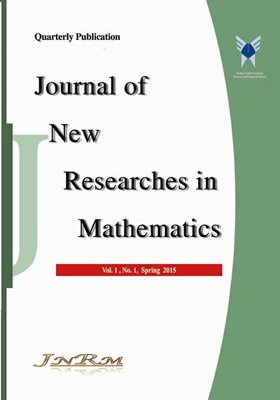یافتن کارآمدترین واحد تصمیم گیرنده در تحلیل پوششی داده ها با استفاده از الگوریتم رقابت استعماری
Subject Areas : تحقیق در عملیاتhasan babaeikeshteli 1 , محسن رستمی مال خلیفه 2
1 -
2 -
Keywords: الگوریتم رقابت استعماری, ناحیه مغلوبی, رتبه بندی, تحلیل پوششی داده ها,
Abstract :
یافتن بهترین و کارآمد ترین واحد تصمیم گیرنده یکی از مهمترین مباحث در تحلیل پوششی داده ها می باشد. دراین مقاله روشی برای برای پیدا کردن کارآمدترین واحد های تصمیم گیرنده کارا با استفاده از تکنیک تحلیل پوششی داده ها و یک الگوریتم تکاملی نوظهور بنام الگوریتم رقابت استعماری، که از پدیده های اجتماعی، سیاسی و فرهنگی انسان سرچشمه می گیرد، پیشنهاد شده است. این الگوریتم از الگوی تاریخی رقابت درمیان کشورهای استعمارگر الهام گرفته درواقع دریچه ای گشوده شده از دنیای ریاضیات و با چشم انداز کاملا انسانی است. در این روش، واحدهای تصمیم گیرنده کارا به عنوان استعمارگر و واحدهای مجازی که در ناحیه مغلوبی آنها قرار دارد را به عنوان مستعمره در نظر گرفته می شود و با استفاده از رقابتی که بین استعمارگرها برای جذب مستعمره های یکدیگر، انجام می شود بهترین واحد مشخص می شود. از جمله حسن این روش این است که بدون حل مدل و تنها با مقایسات زوجی، واحد کارآمد مشخص میشود.
[1] Charnes, A., Cooper, W. W., Rhodes, E., (1978). Measuring the efficiency of decision making units. European journal of operational research, 2(6), 429-444.
[2] Farrell, M. J., (1957). The measurement of productive efficiency. Journal of the Royal Statistical Society: Series A (General), 120(3), 253-281.
[3] Banker, R. D., Charnes, A., Cooper, W. W., (1984). Some models for estimating technical and scale inefficiencies in data envelopment analysis. Management science, 30(9), 1078-1092.
[4] Andersen, P. and Petersen, N.C., 1993. A procedure for ranking efficient units in data envelopment analysis. Management science, 39(10), pp.1261-1264
[5] Sexton, T.R., Silkman, R.H. and Hogan, A.J., 1986. Data envelopment analysis: Critique and extensions. New Directions for Evaluation, 1986(32), pp.73-105.
[6] Liang, L., Wu, J., Cook, W.D. and Zhu, J., 2008. Alternative secondary goals in DEA cross-efficiency evaluation. International Journal of Production Economics, 113(2), pp.1025-1030.
[7] Emrouznejad, A., Mustafa, A. and Al-Eraqi, A.S., 2010. Aggregating preference ranking with fuzzy data envelopment analysis. Knowledge-Based Systems, 23(6), pp.512-519.
[8] Jahanshahloo, G.R., Sadeghi, J. and Khodabakhshi, M., 2017. Fair ranking of the decision making units using optimistic and pessimistic weights in data envelopment analysis. RAIRO-Operations Research, 51(1), pp.253-260.
[9] Dehnokhalaji, A., Hallaji, B., Soltani, N. and Sadeghi, J., 2017. Convex cone-based ranking of decision-making units in DEA. OR Spectrum: Quantitative Approaches in Management, 39(3), pp.861-880.
[10] Ertay , T ., Ruan , D ., Tuzkaya, U. R (2006). Integrating data envelopment analysis and analytic hierarchy for the facility layout design in manufacturing systems. Information Sciences,176,7-262.
[11] Amin, G. R ., Toloo, M ., (2007). Finding the most efficient DMUs in DEA: an improved integrated model. Computers and Industrial Engineering, 52, 71-77.
[12] Amin, G. R ., (2009). Comments on finding the most efficient DMUs in DEA: An improved integrated model Computers and Industrial Engineering,56, 1701-1702
[13] Toloo , M ., Nalchigar, S ., (2009). A new integrated DEA model for finding most BCC-efficient DMU . Applied Math ematical Model ling, 33, 597-604.
[14] Atashpaz-Gargari, E. and Lucas, C., 2007, September. Imperialist competitive algorithm: an algorithm for optimization inspired by imperialistic competition. In Evolutionary computation, 2007. CEC 2007. IEEE Congress on (pp. 4661-4667).
[15] Deprins, D., Simar, L. and Tulkens, H., 1984. Measuring labor-efficiency in post offices. Public goods, environmental externalities and fiscal competition, pp.285-309.
[16] Tulkens, H., 1993. On FDH efficiency analysis: some methodological issues and applications to retail banking, courts, and urban transit. In Productivity Issues in Services at the Micro Level (pp. 179-206).
[17] Jahanshahloo, G.R., Lotfi, F.H., Rezai, H.Z. and Balf, F.R., 2005. Using Monte Carlo method for ranking efficient DMUs. Applied Mathematics and Computation, 162(1), pp.371-379.
[18] Mehrabian, S., Alirezaee, M.R. and Jahanshahloo, G.R., 1999. A complete efficiency ranking of decision making units in data envelopment analysis. Computational optimization and applications, 14(2), pp.26126


